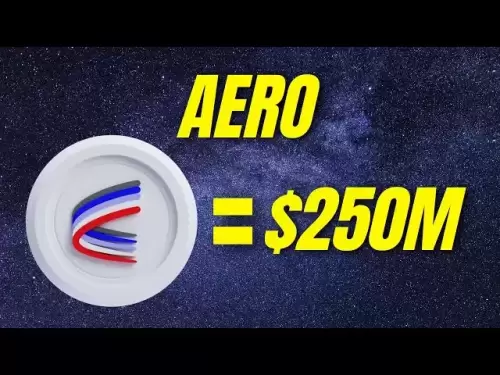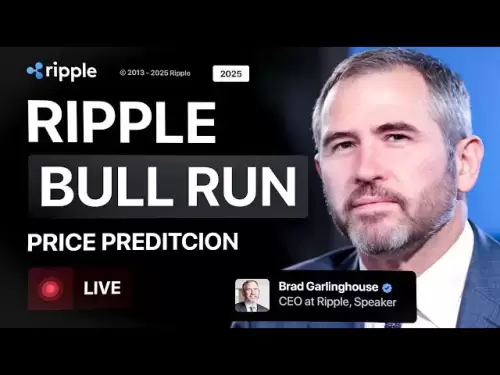-
 Bitcoin
Bitcoin $115,838.9935
4.06% -
 Ethereum
Ethereum $2,962.3060
6.90% -
 Tether USDt
Tether USDt $0.9999
-0.05% -
 XRP
XRP $2.5366
5.01% -
 BNB
BNB $686.0768
2.37% -
 Solana
Solana $163.9329
4.06% -
 USDC
USDC $0.9999
-0.02% -
 Dogecoin
Dogecoin $0.1924
5.65% -
 TRON
TRON $0.2929
1.03% -
 Cardano
Cardano $0.6744
8.30% -
 Hyperliquid
Hyperliquid $43.6306
6.90% -
 Sui
Sui $3.4647
12.59% -
 Bitcoin Cash
Bitcoin Cash $519.0816
1.17% -
 Chainlink
Chainlink $15.2152
6.57% -
 Stellar
Stellar $0.3034
5.48% -
 Avalanche
Avalanche $20.5939
5.48% -
 UNUS SED LEO
UNUS SED LEO $9.0437
0.50% -
 Hedera
Hedera $0.1878
9.62% -
 Shiba Inu
Shiba Inu $0.0...01321
6.26% -
 Toncoin
Toncoin $2.9364
3.03% -
 Litecoin
Litecoin $94.5494
4.04% -
 Polkadot
Polkadot $3.8539
5.80% -
 Monero
Monero $327.4607
0.26% -
 Dai
Dai $0.9997
-0.04% -
 Uniswap
Uniswap $8.5043
0.84% -
 Ethena USDe
Ethena USDe $1.0007
-0.05% -
 Bitget Token
Bitget Token $4.5445
3.39% -
 Pepe
Pepe $0.0...01226
9.12% -
 Aave
Aave $310.6483
2.50% -
 Pi
Pi $0.5024
6.43%
What is a Commit-Reveal scheme in a smart contract?
A Commit-Reveal scheme ensures fairness in decentralized apps by letting users commit to hidden values and reveal them later, preventing tampering and manipulation.
Jul 10, 2025 at 05:22 pm
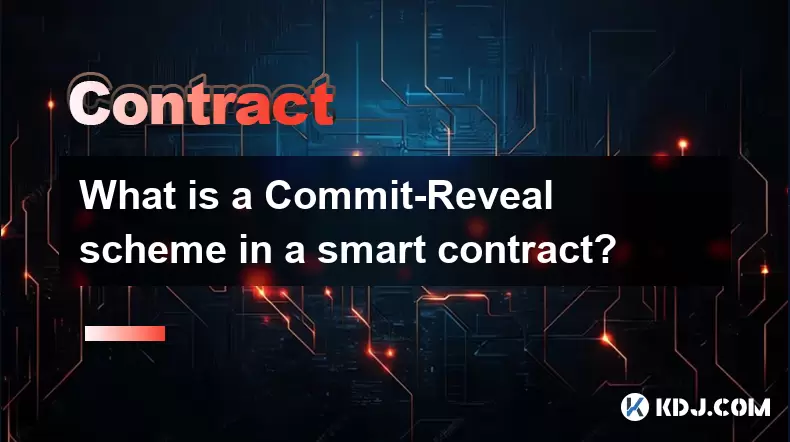
Understanding the Concept of a Commit-Reveal Scheme
In the realm of blockchain and smart contracts, privacy and fairness are often critical concerns, especially in decentralized applications (dApps) involving voting, auctions, or lotteries. A Commit-Reveal scheme is a cryptographic mechanism designed to address these issues by enabling participants to commit to a value without revealing it immediately, and later disclose (reveal) it when appropriate.
This scheme ensures that no participant can alter their choice after seeing others’ inputs, thereby preventing manipulation. It works on the principle of hash commitments, where users submit a hashed version of their data during the commitment phase, then reveal the original data during the subsequent reveal phase.
The Two-Phase Process: Commitment and Revelation
The Commit-Reveal scheme operates in two distinct phases:
- Commit Phase: Users generate a hash of their secret value using a cryptographic function (typically keccak256 in Ethereum-based smart contracts). This hash, along with any additional parameters like salt or nonce, is submitted to the contract.
- Reveal Phase: After the commitment window closes, users submit their original secret values. The contract verifies that the revealed value matches the previously submitted hash.
These phases ensure that once a user commits, they cannot change their input without being detected. This is crucial for maintaining fairness in systems like blind auctions or secure voting mechanisms.
Implementing a Commit-Reveal Scheme in Solidity
To implement a Commit-Reveal scheme in a smart contract, developers typically use the Ethereum Virtual Machine (EVM) and Solidity as the programming language. Below is a basic outline of how this would be structured:
- Create a mapping to store the commitments from each user.
- Define time windows for both the commit and reveal phases to prevent indefinite participation.
- Use keccak256 hashing to allow users to submit their hashed values securely.
- During the reveal phase, compare the hash of the revealed value with the stored commitment.
Here’s an example of how a commitment might be verified:
require(keccak256(abi.encodePacked(revealedValue, salt)) == storedCommitment, "Invalid reveal");This line checks whether the combination of the revealed value and a unique salt matches the initial commitment hash.
Use Cases for Commit-Reveal Schemes
Several decentralized applications benefit from Commit-Reveal schemes due to their ability to enforce integrity and secrecy:
- Decentralized Voting: Voters can commit to their choices before the deadline, ensuring that votes remain private until all have been cast.
- Blind Auctions: Bidders submit encrypted bids initially, which are only revealed after the auction closes, preventing price manipulation.
- Lottery Systems: Participants commit to random numbers or entries, which are later revealed to determine winners fairly.
Each of these use cases leverages the scheme’s ability to delay disclosure until a predetermined moment, thus enhancing trust and fairness in the system.
Security Considerations and Best Practices
While Commit-Reveal schemes enhance security and fairness, improper implementation can expose vulnerabilities. Here are some best practices:
- Include Salt or Nonce: Adding a unique salt or nonce prevents dictionary attacks where attackers could guess common values by re-hashing them.
- Time Constraints: Define clear start and end times for both phases to avoid indefinite locking of funds or data.
- Gas Efficiency: Optimize storage and computation during verification to minimize transaction costs.
- Off-chain Verification: Ensure that clients verify their own hashes before submission to reduce failed transactions.
Smart contract audits are also highly recommended to identify edge cases or logical errors that may compromise the intended behavior of the scheme.
Frequently Asked Questions
Q1: Can I use a Commit-Reveal scheme on blockchains other than Ethereum?
Yes, while Ethereum provides built-in support for keccak256 hashing, other EVM-compatible chains and even non-EVM blockchains can implement similar logic using available cryptographic functions.
Q2: What happens if someone fails to reveal their commitment?
Depending on the contract design, failure to reveal within the specified time window may result in disqualification, loss of deposit, or invalidation of the commitment.
Q3: How do I choose the right salt or nonce size?
The salt should be sufficiently large and random to prevent brute-force attacks. Typically, a 256-bit random number is used to ensure cryptographic strength.
Q4: Is it possible to conduct multiple rounds of Commit-Reveal in one contract?
Yes, smart contracts can be designed to handle multiple rounds by resetting state variables and updating timestamps accordingly, allowing for repeated usage within the same contract instance.
Disclaimer:info@kdj.com
The information provided is not trading advice. kdj.com does not assume any responsibility for any investments made based on the information provided in this article. Cryptocurrencies are highly volatile and it is highly recommended that you invest with caution after thorough research!
If you believe that the content used on this website infringes your copyright, please contact us immediately (info@kdj.com) and we will delete it promptly.
- Bitcoin Blasts Past $116K: Crypto Market Hits Record High, Fueled by Altcoin Frenzy
- 2025-07-11 08:30:13
- Bitcoin Price Surges to New ATH Above $113,700 Amid Trump Rate Cut Buzz
- 2025-07-11 08:30:13
- Bitcoin, Altcoins, Cryptocurrency: Riding the Bullish Wave to New Heights
- 2025-07-11 06:30:13
- Ruvi AI: Smarter Crypto Bet Than Tron? Unlocking ROI in the AI-Blockchain Revolution
- 2025-07-11 07:10:13
- Bitcoin's New High: Riding the Cryptocurrency Wave to $113,800 and Beyond
- 2025-07-11 07:10:14
- Bitcoin, Ethereum, and the Market Rally: What's Driving the Crypto Surge?
- 2025-07-11 07:30:13
Related knowledge
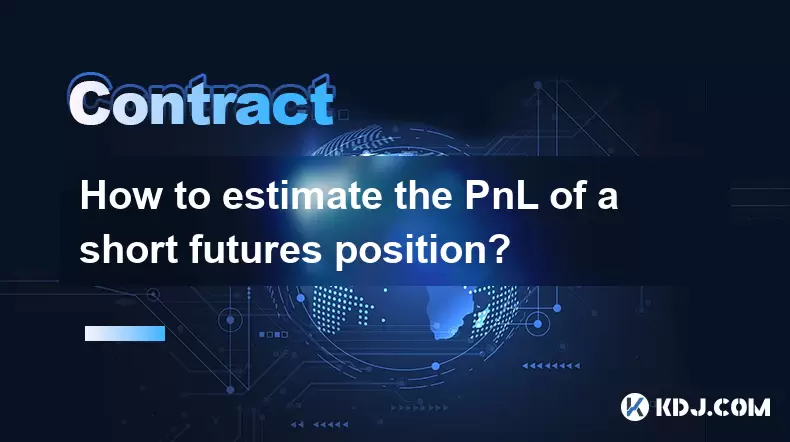
How to estimate the PnL of a short futures position?
Jul 10,2025 at 05:00pm
Understanding the Basics of Futures Trading and PnLIn futures trading, a trader enters into a contract to buy or sell an asset at a predetermined pric...
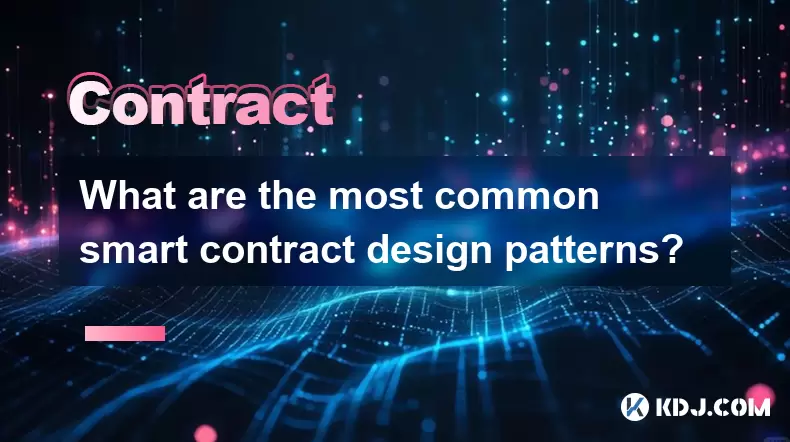
What are the most common smart contract design patterns?
Jul 10,2025 at 09:29pm
Introduction to Smart Contract Design PatternsSmart contract design patterns are standardized solutions to recurring problems encountered during the d...

What is a Commit-Reveal scheme in a smart contract?
Jul 10,2025 at 05:22pm
Understanding the Concept of a Commit-Reveal SchemeIn the realm of blockchain and smart contracts, privacy and fairness are often critical concerns, e...
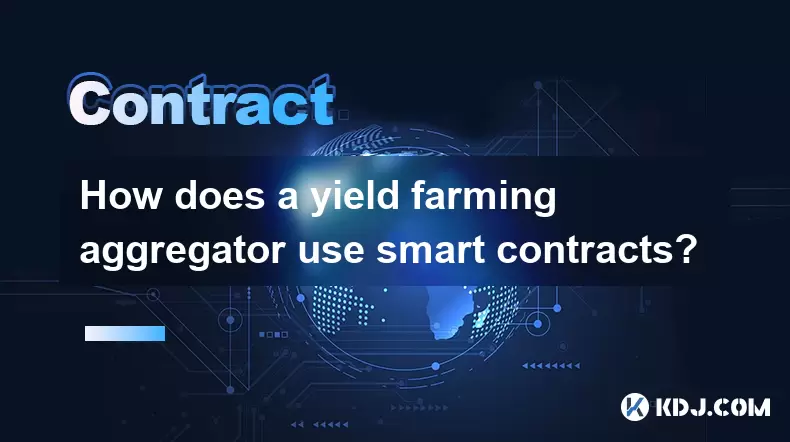
How does a yield farming aggregator use smart contracts?
Jul 11,2025 at 02:49am
Understanding the Role of Smart Contracts in Yield Farming AggregatorsA yield farming aggregator leverages smart contracts to automate and optimize th...
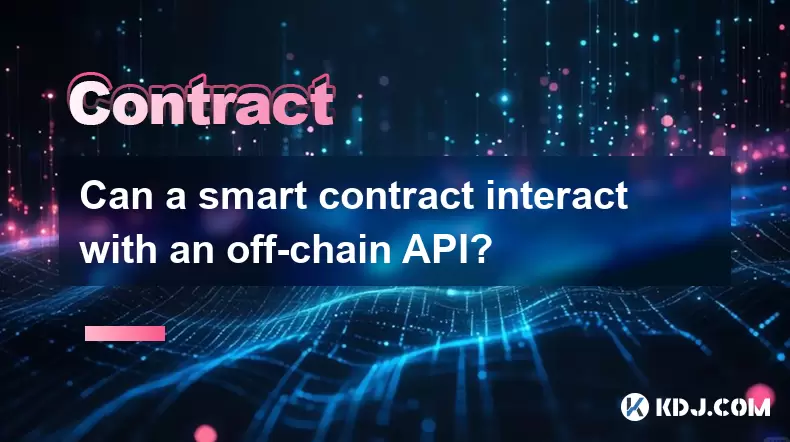
Can a smart contract interact with an off-chain API?
Jul 10,2025 at 09:42pm
What is a Smart Contract?A smart contract is a self-executing contract with the terms of the agreement directly written into lines of code. These cont...
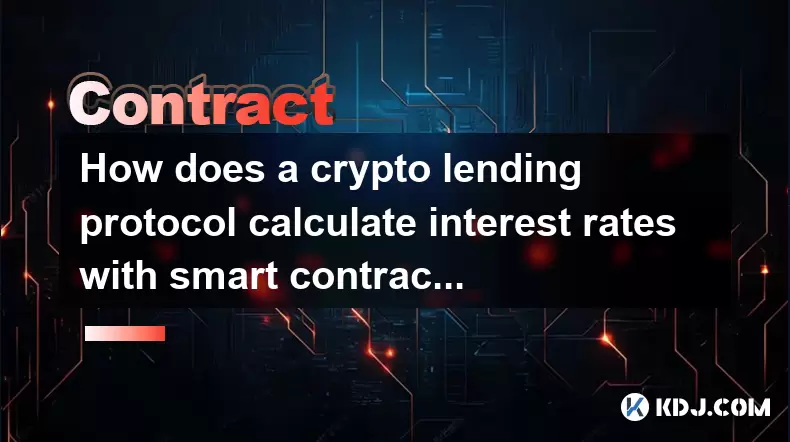
How does a crypto lending protocol calculate interest rates with smart contracts?
Jul 11,2025 at 07:21am
Understanding the Basics of Crypto Lending ProtocolsCrypto lending protocols operate on blockchain networks using smart contracts to automate the proc...

How to estimate the PnL of a short futures position?
Jul 10,2025 at 05:00pm
Understanding the Basics of Futures Trading and PnLIn futures trading, a trader enters into a contract to buy or sell an asset at a predetermined pric...

What are the most common smart contract design patterns?
Jul 10,2025 at 09:29pm
Introduction to Smart Contract Design PatternsSmart contract design patterns are standardized solutions to recurring problems encountered during the d...

What is a Commit-Reveal scheme in a smart contract?
Jul 10,2025 at 05:22pm
Understanding the Concept of a Commit-Reveal SchemeIn the realm of blockchain and smart contracts, privacy and fairness are often critical concerns, e...

How does a yield farming aggregator use smart contracts?
Jul 11,2025 at 02:49am
Understanding the Role of Smart Contracts in Yield Farming AggregatorsA yield farming aggregator leverages smart contracts to automate and optimize th...

Can a smart contract interact with an off-chain API?
Jul 10,2025 at 09:42pm
What is a Smart Contract?A smart contract is a self-executing contract with the terms of the agreement directly written into lines of code. These cont...

How does a crypto lending protocol calculate interest rates with smart contracts?
Jul 11,2025 at 07:21am
Understanding the Basics of Crypto Lending ProtocolsCrypto lending protocols operate on blockchain networks using smart contracts to automate the proc...
See all articles























